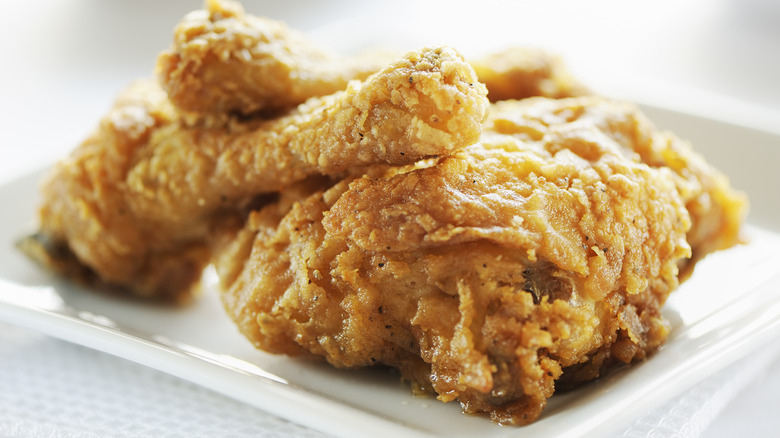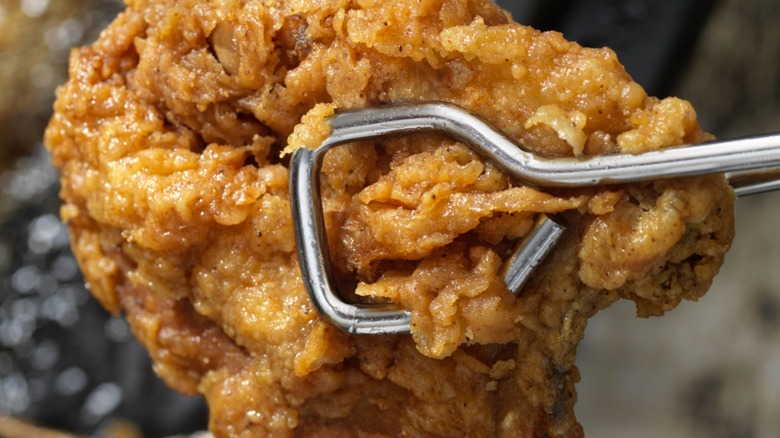Why You Should Be Double Dipping When Making Fried Chicken, According To A Chef
Fried chicken connoisseurs know that it's essential to dip your poultry in a seasoned coating before cooking it. But should you go in for one or two rounds of dredging? To get the best answer here, we consulted an expert. Jeff McInnis is an executive chef at Root & Bone and Stiltsville Fish Bar, two Miami-based establishments that feature delectable fried chicken dishes on the menu, so it's safe to say he knows a thing or two about dredging. And, per his expert opinion, double dipping is the way to go.
"Love double dredging! When done correctly, doing a double fry can make a thick, super crunchy outer coating," McInnis told Tasting Table. And in between dips, he recommends re-breading your chicken each time. "I've found that marinating in buttermilk for a short period of time, seasoned flour, dredging and frying ... Then doing a second quick coat and frying again works well with making that thick crust," he explained. Beyond creating some extra crunch with your double-layered coating, making your breaded flour or buttermilk fried chicken this way can also lock extra juiciness into your poultry.
How to avoid soggy fried chicken
Of course, with all that extra coating, you'll want to make sure you end up with the crunchiest, crispiest chicken possible — and that means avoiding any sogginess whatsoever. There are plenty of mistakes you can make with fried chicken that can result in mushy poultry, including placing the pieces on paper towels to drain after frying, but Jeff McInnis has a few pointers to steer us in the right direction.
Instead of paper towels, he recommends keeping your fried chicken on a roasting rack so that air can circulate on all sides (which a wire cooling rack can accomplish, too). And when doing so, make sure to keep the breast and thighs right-side up with the bone side down. But while this works if you need to set your chicken aside for a bit, it'll taste best hot and fresh, right off the stove.
When you're frying, McInnis advises paying close attention to the temperature of your oil. "The other issue with sogginess is you must make sure that your oil is hot enough for frying," he said. "If the oil is not hot enough, you won't get a crispy crust." The best oil temperature for frying chicken is between 300 and 325 degrees Fahrenheit, so use a thermometer to make sure you're falling in this range. And if you're working with multiple batches, keep your oil hot enough before each round of chicken to ensure maximum crunch.

